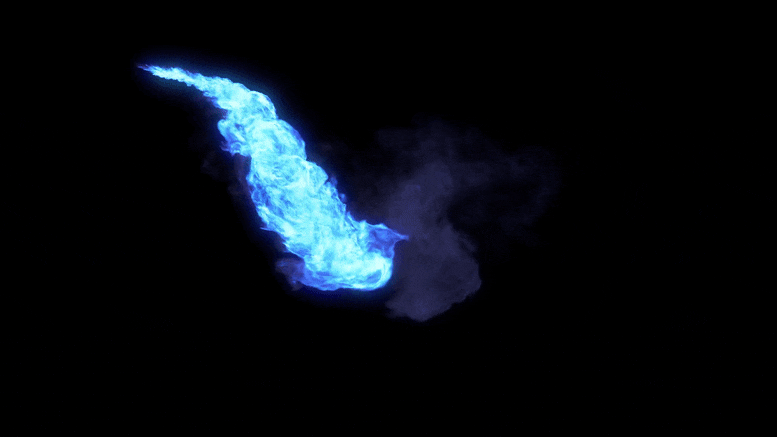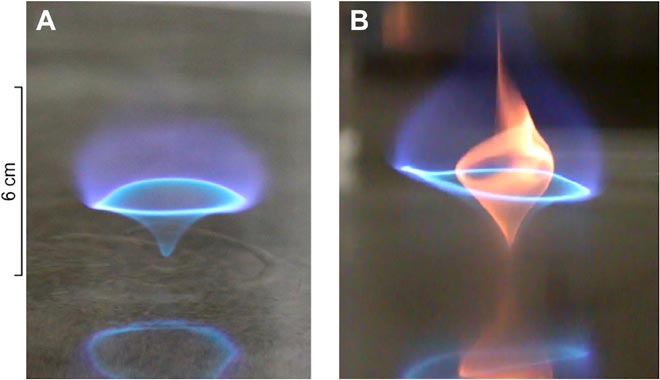
A recently discovered soot-free flame called a blue whirl — which consumes all fuel it encounters — actually consists of three different flame structures that swirl together into one otherworldly blue ring, according to the first study to identify how these unique flames form. By revealing the blue whirl’s structure, the findings may inform potential applications of the flame for efficient, low-emission combustion.
“Only if we understand its structure can we tame it, scale it, and create it at will,” Joseph Chung and colleagues write in the study.

The blue whirl observed in experiment. (A) Stable blue whirl. (B) Slightly unstable blue whirl with soot in the middle, suggesting a bubble mode of vortex breakdown. Credit: H. Xiao, University of Science and Technology of China.
Scientists recently discovered the formation of a blue whirl while experimenting with fire whirls produced by burning liquid hydrocarbon fuels on a water base. But while further investigations have since produced temperature maps of blue whirls and informed how they can be stabilized, their flame structure and dynamics — especially how they form from a fire whirl — have remained mysterious.
To simulate how blue whirls emerge, Chung et al. coupled 3D, time-dependent equations that describe the motion of viscous fluid substances to a model for fuel conversion and chemical energy release. The researchers started by simulating experimental conditions, then tweaked physical parameters such as fuel and air size and velocity in their calculations until a blue whirl materialized.
The researchers found that the ethereal flame is composed of three different flames: a diffusion flame, in which the fuel and oxidizer are separated before burning, and premixed rich (with excess fuel) and lean (with excess air) flames. Chung et al. conclude that their research provides a tool to further explore this phenomenon, including whether the flame can be made directly and scaled up safely to larger sizes.
Reference: “The structure of the blue whirl revealed” by Joseph D. Chung, Xiao Zhang, Carolyn R. Kaplan and Elaine S. Oran, 12 August 2020, Science Advances.
DOI: 10.1126/sciadv.aba0827








 User Center
User Center My Training Class
My Training Class Feedback
Feedback












Comments
Something to say?
Log in or Sign up for free